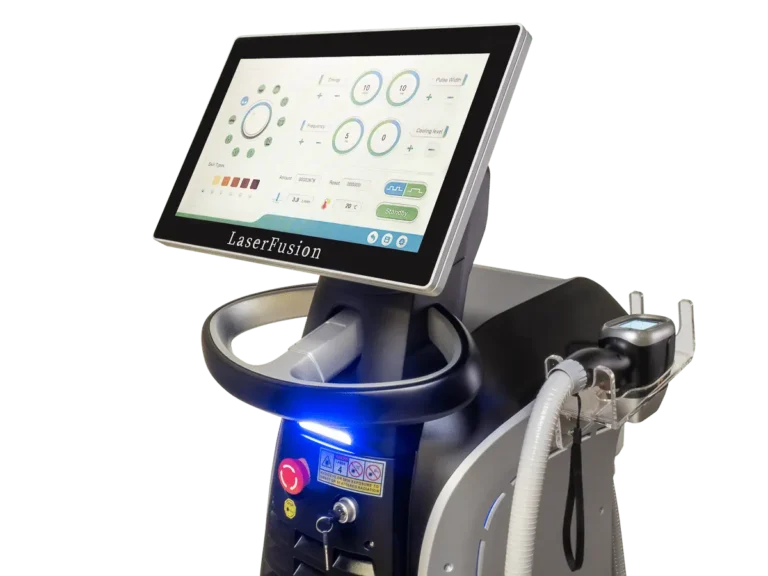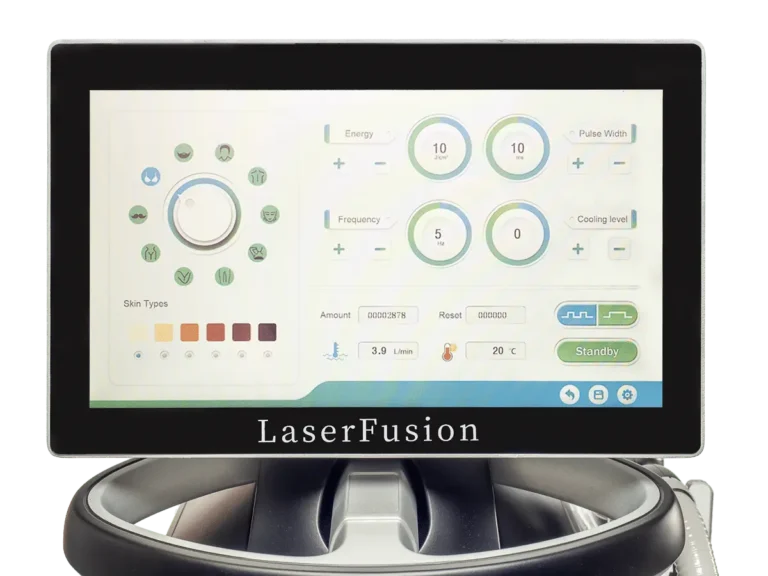In the ever-evolving world of fashion and technology, the concept of “smart clothing” has emerged as a captivating frontier. This innovative field blends traditional textiles with cutting-edge wearable technology, unlocking a realm of possibilities for how we interact with our clothing and accessories. From advanced biometric tracking to augmented reality integration, the latest trends in smart clothing technology are poised to redefine the way we dress, exercise, and even monitor our health.
As the industry continues to push the boundaries of what’s possible, the landscape of smart fabrics and e-textiles is experiencing a remarkable transformation. Designers, engineers, and researchers are collaborating to create garments and accessories that not only look stylish but also possess remarkable functional capabilities. This fusion of fashion and function is ushering in a new era of intelligent, responsive, and personalized apparel that promises to enhance our daily lives in unprecedented ways.
Key Takeaways
- The smart clothing industry is rapidly evolving, blending traditional textiles with cutting-edge wearable technology.
- Innovative trends in smart clothing include advanced biometric tracking, augmented reality integration, and eco-friendly materials.
- Smart clothing is poised to redefine how we dress, exercise, and monitor our health, with a focus on functionality and personalization.
- Designers, engineers, and researchers are collaborating to create intelligent, responsive, and sustainable apparel.
- The fusion of fashion and technology is driving the growth of the smart clothing market and shaping the future of how we interact with our clothing.
The Evolution of Smart Clothing Technology
The world of fashion has undergone a remarkable transformation, with the integration of advanced clothing sensors and electronic clothing paving the way for a new era of smart apparel. From traditional textiles to cutting-edge intelligent fabrics, the evolution of smart clothing technology has been a journey of innovation and creativity.
From Traditional Textiles to Intelligent Fabrics
The roots of smart clothing can be traced back to the development of conductive and responsive textiles. As technology advanced, researchers and designers began exploring the integration of electronic components into fabrics, enabling garments to interact with their wearers and the environment. This transition from conventional textiles to intelligent fabrics opened up a world of possibilities, allowing for the creation of clothing that could sense, monitor, and even respond to various stimuli.
Historical Development of Wearable Tech
The rise of wearable technology has been a long-standing trend, with early pioneers paving the way for the modern smart clothing revolution. Milestones such as the invention of the wearable computer in the 1970s and the introduction of fitness trackers in the early 2000s laid the groundwork for the integration of electronics and sensors into garments. As technology evolved, so did the capabilities of smart clothing, with the ability to track vital signs, monitor activity levels, and even provide personalized feedback to wearers.
Current Market Overview
Today, the smart clothing market is experiencing a remarkable surge, with a wide range of innovative products and technologies available to consumers. From fitness apparel that tracks heart rate and movement to garments that can regulate body temperature, the possibilities are endless. As the demand for connected and intelligent clothing continues to grow, manufacturers and designers are pushing the boundaries of what’s possible, creating a future where fashion and function seamlessly converge.
Understanding Smart Fabrics and E-textiles
In the realm of modern fashion and apparel, the emergence of smart fabrics and e-textiles has revolutionized the way we interact with our clothing. These innovative materials blend traditional textile production with cutting-edge electronic components, creating a seamless fusion of form and function.
Smart fabrics, also known as e-textiles, are textiles that have been engineered to possess unique properties that go beyond the traditional capabilities of conventional fabrics. These materials can sense, react, and interact with their environment, opening up a world of possibilities for the fashion and technology industries.
The key to the success of smart fabrics lies in their ability to integrate electronic components, such as sensors, actuators, and microprocessors, directly into the fabric itself. This integration allows for the creation of responsive garments that can monitor various physiological and environmental factors, providing wearers with real-time feedback and enhanced functionality.
Types of Smart Fabrics
Smart fabrics can be categorized into several distinct types, each with its own unique applications and characteristics:
- Conductive Fabrics: These fabrics are infused with conductive materials, such as metal fibers or carbon nanotubes, enabling the transmission of electrical signals and the integration of electronic components.
- Chromic Fabrics: Fabrics that can change color or appearance in response to environmental stimuli, such as temperature, light, or chemical exposure.
- Shape-Memory Fabrics: Fabrics that can remember and return to their original shape, even after being deformed, making them ideal for clothing that adapts to the wearer’s movements.
- Self-Cleaning Fabrics: Fabrics that can self-clean or repel dirt and stains, reducing the need for frequent washing and prolonging the garment’s lifespan.
As e-textiles and smart fabrics continue to evolve, the possibilities for their integration into fashion and apparel are endless, paving the way for a future where our clothes are not just a means of self-expression, but also a tool for enhancing our daily lives.
Biometric Monitoring in Modern Apparel
As technology continues to evolve, the integration of biometric monitoring capabilities in everyday wearable technology has become increasingly prevalent. Smart clothing now offers a remarkable opportunity to track various physiological parameters, revolutionizing the way we approach personal health and fitness.
Heart Rate and Activity Tracking
Embedded sensors in smart fabrics can accurately monitor an individual’s heart rate, providing valuable insights into their cardiovascular health and level of physical activity. By continuously tracking heart rate patterns, smart garments can help users better understand their exercise performance, calorie expenditure, and overall fitness levels.
Temperature and Sweat Analysis
Smart clothing equipped with thermosensors can measure the user’s body temperature and even analyze sweat composition. This data can be used to optimize athletic training, monitor hydration levels, and provide personalized recommendations for improved recovery and performance.
Sleep Quality Monitoring
The integration of biometric monitoring technology in smart sleepwear allows for the assessment of sleep patterns, including stages of sleep, duration, and quality. By providing users with detailed insights into their sleep habits, smart clothing can help individuals develop healthier sleep routines and identify potential sleep-related issues.
The advancements in wearable technology have transformed the way we approach personal health and wellness. Smart clothing, with its biometric monitoring capabilities, empowers individuals to take a more proactive approach to their well-being, ensuring a healthier and more informed lifestyle.
Wat zijn de nieuwste trends in slimme kledingtechnologie?
In the rapidly evolving world of fashion tech, the latest trends in smart fabrics and intelligent clothing are pushing the boundaries of what’s possible. From self-cleaning garments to shape-shifting designs, the future of fashion is nothing short of extraordinary.
One of the most exciting developments is the emergence of self-cleaning smart fabrics. These advanced textiles use innovative nanotechnology to repel dirt, stains, and even bacteria, reducing the need for frequent washing and prolonging the life of your clothing. Imagine a wardrobe that practically maintains itself!
Another trend gaining traction is the integration of shape-shifting capabilities in smart clothing. Garments with the ability to adjust their size, fit, and even shape based on the wearer’s needs are revolutionizing the way we think about personalized fashion. This technology opens up a world of possibilities, from on-the-go adaptability to enhanced comfort and performance.
The intersection of fashion tech and sustainability is also a growing focus, with the incorporation of solar panels into clothing designs. These innovative smart fabrics can harvest energy from sunlight, providing a renewable power source for wearable electronics and devices. This eco-friendly approach to fashion tech is a promising step towards a more sustainable future.
As smart clothing continues to evolve, the boundaries between fashion and technology are blurring, offering consumers unprecedented levels of functionality, personalization, and style. The future of fashion tech is an exciting frontier, and the latest trends in smart fabrics are poised to redefine the way we think about and interact with our wardrobes.
Integration of Augmented Reality in Fashion
The intersection of augmented reality apparel and fashion tech is transforming the way we interact with and experience clothing. From captivating interactive displays to virtual fitting rooms, the integration of this cutting-edge technology is revolutionizing the fashion industry.
Interactive Clothing Displays
Imagine walking into a store and seeing garments that come alive before your eyes. Augmented reality apparel technology allows clothing to seamlessly change patterns, colors, or even incorporate dynamic elements that respond to your movement. This immersive experience captivates shoppers and brings a new level of excitement to the in-store shopping journey.
Virtual Fitting Rooms
No more guessing whether that dress or pair of jeans will fit. Fashion tech advancements have given rise to virtual fitting rooms that enable customers to digitally try on clothes without ever having to step into a physical dressing room. Using advanced 3D scanning and AR, these virtual experiences provide a more personalized and efficient way to find the perfect fit.
AR-Enhanced Shopping Experience
The integration of augmented reality apparel extends beyond the store walls, transforming the online shopping experience as well. Customers can now use their smartphones to visualize how garments will look on them, gaining a better understanding of the product before making a purchase. This fashion tech feature enhances customer confidence and reduces return rates, ultimately improving overall satisfaction.
As the augmented reality apparel and fashion tech industries continue to evolve, the integration of these technologies will undoubtedly shape the future of how we discover, try, and buy clothing. The possibilities are endless, and the shopping experience is about to become more interactive and personalized than ever before.
Smart Clothing for Sports and Athletics
In the realm of athletic performance and training, the integration of wearable technology and biometric monitoring is revolutionizing the way athletes approach their craft. Smart clothing, designed with innovative fabrics and advanced sensors, is empowering sportsmen and women to push the boundaries of their potential.
From tracking heart rate and activity levels to analyzing temperature and sweat patterns, these smart garments provide real-time feedback that coaches and athletes can use to optimize training regimens and prevent injuries. By leveraging the power of wearable technology, athletes can gain deeper insights into their bodies’ responses, allowing them to fine-tune their training strategies for maximum efficiency and success.
Enhancing Athletic Performance
Leading sportswear brands have embraced the integration of wearable technology, introducing a range of smart clothing options designed to boost athletic performance. These innovative garments incorporate advanced sensors that monitor various biometric indicators, such as:
- Heart rate and respiratory patterns
- Muscle activity and fatigue levels
- Body temperature and sweat production
By providing instant feedback on these critical metrics, athletes can make informed decisions about pacing, recovery, and training adjustments, ultimately enhancing their overall performance and reducing the risk of overexertion or injury.
Injury Prevention and Recovery
Beyond just performance enhancement, smart clothing technologies are also revolutionizing the way athletes approach injury prevention and recovery. Garments equipped with specialized sensors can detect signs of muscle strain or joint stress, alerting athletes and coaches to potential issues before they escalate. This proactive approach allows for timely interventions and targeted rehabilitation, helping athletes maintain their physical well-being and minimize downtime due to injuries.
| Smart Clothing Feature | Benefit |
|---|---|
| Heart Rate Monitoring | Allows athletes to optimize training intensity and monitor recovery |
| Muscle Activity Tracking | Helps identify areas of overuse or imbalance to prevent injuries |
| Temperature and Sweat Analysis | Provides insights into hydration levels and thermal regulation |
As the world of sports and athletics continues to evolve, the integration of wearable technology and smart clothing is poised to transform the way athletes train, compete, and maintain their physical well-being. By harnessing the power of biometric monitoring and data-driven insights, the future of smart sportswear promises to elevate athletic performance to new heights.
Sustainable Smart Fashion Technologies
In the rapidly evolving world of fashion tech, sustainability has emerged as a crucial priority. As e-textiles and smart clothing technologies continue to advance, industry leaders are exploring innovative ways to minimize the environmental impact of these cutting-edge innovations.
Eco-friendly Smart Materials
The development of eco-friendly smart materials is a key focus area for sustainable fashion tech. Researchers are experimenting with biodegradable and recyclable fabrics, such as organic cotton, bamboo, and even seaweed-based textiles, to create smart garments that are kinder to the planet. These natural fibers not only reduce waste but also offer enhanced breathability and moisture-wicking properties, making them ideal for fashion tech applications.
Recyclable Electronic Components
Another important aspect of sustainable smart fashion is the focus on recyclable electronic components. Smart garments often incorporate sensors, circuits, and other electronic elements that can be challenging to dispose of responsibly. Designers and engineers are now working to develop modular, removable, and easily recyclable systems that can be seamlessly integrated into clothing. This approach not only reduces e-waste but also allows for easier maintenance and upgrades of smart fashion items.
| Eco-friendly Smart Material | Key Benefits |
|---|---|
| Organic Cotton | Biodegradable, breathable, and moisture-wicking |
| Bamboo Fibers | Sustainable, soft, and antimicrobial |
| Seaweed-based Textiles | Renewable, absorbent, and hypoallergenic |
As the fashion tech industry continues to evolve, the push for sustainable solutions has become a driving force. By embracing eco-friendly smart materials and recyclable electronic components, fashion brands and designers can create smart garments that not only enhance our lives but also protect the planet we call home.
Connected Clothing and IoT Integration
The world of electronic clothing and wearable technology is rapidly evolving, and the integration of smart garments with the Internet of Things (IoT) is at the forefront of this revolution. Connected clothing is poised to transform how we interact with our digital environments, offering a seamless intersection between fashion, technology, and everyday living.
Smart fabrics and e-textiles are now capable of communicating with a variety of IoT-enabled devices, from smartphones and smartwatches to smart home systems. This interconnectivity opens up a world of possibilities, allowing wearers to control their environment, access information, and monitor their health and fitness with the simple touch of a garment.
One of the key benefits of connected clothing is the ability to collect and analyze data in real-time. Sensors embedded within the fabric can track biometric information, such as heart rate, temperature, and activity levels, providing users with valuable insights into their health and wellness. This data can then be seamlessly synced with other IoT devices, enabling a more comprehensive understanding of the wearer’s overall well-being.
| Feature | Benefit |
|---|---|
| Remote Device Control | Allows wearers to control smart home appliances, lighting, and entertainment systems directly from their electronic clothing. |
| Biometric Monitoring | Tracks vital signs and activity levels, providing users with real-time health data and enabling proactive wellness management. |
| Automatic Notifications | Sends alerts to connected devices, such as smartphones or smartwatches, to notify wearers of important events or changes in their environment or health status. |
As the integration of electronic clothing and the IoT continues to evolve, it is important to consider the privacy and security implications of this technology. Wearers must be vigilant about data privacy and ensure that their personal information is protected from unauthorized access. Responsible development and implementation of these smart garments will be crucial in building trust and ensuring the widespread adoption of connected clothing technology.
Healthcare Applications in Smart Garments
The potential of smart clothing extends far beyond fashion and fitness. In the realm of healthcare, these intelligent fabrics and integrated technologies are transforming the way we monitor, manage, and maintain our well-being. From advanced biometric monitoring to therapeutic garments and preventive health features, smart garments are revolutionizing the healthcare industry.
Medical Monitoring Capabilities
Smart clothing equipped with specialized sensors can provide continuous, non-invasive monitoring of vital signs and physical activities. Sensors embedded within the fabric can track heart rate, respiration, body temperature, and even detect early warning signs of potential health issues. This real-time data can be seamlessly transmitted to healthcare providers, enabling timely interventions and personalized treatment plans.
Therapeutic Smart Clothing
Beyond monitoring, smart garments are also being designed to aid in the recovery and rehabilitation process. Garments with integrated actuators and pressure-sensing capabilities can provide targeted compression, vibration, or electrical stimulation to promote healing, reduce pain, and enhance mobility. These therapeutic smart clothing solutions can be particularly beneficial for individuals recovering from injuries, chronic conditions, or undergoing physical therapy.
Preventive Health Features
Smart clothing is not just about addressing existing health concerns; it also has the potential to promote overall wellness and prevent future issues. Garments with integrated clothing sensors and biometric monitoring capabilities can track sleep patterns, physical activity, and even stress levels. By providing valuable insights into an individual’s health and lifestyle, smart clothing can empower users to make more informed decisions and adopt proactive measures to maintain their well-being.








